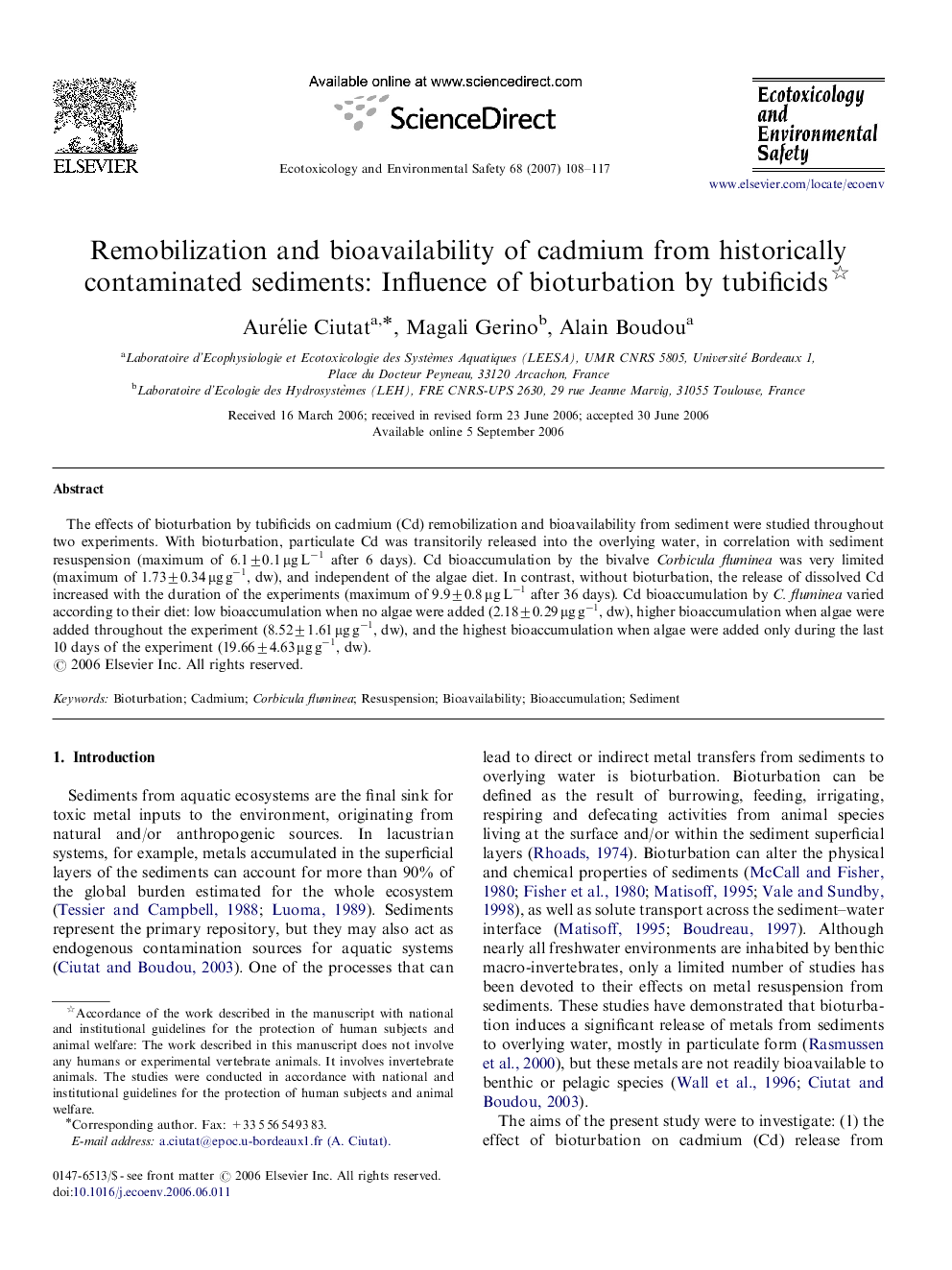| Article ID | Journal | Published Year | Pages | File Type |
|---|---|---|---|---|
| 4422113 | Ecotoxicology and Environmental Safety | 2007 | 10 Pages |
The effects of bioturbation by tubificids on cadmium (Cd) remobilization and bioavailability from sediment were studied throughout two experiments. With bioturbation, particulate Cd was transitorily released into the overlying water, in correlation with sediment resuspension (maximum of 6.1±0.1 μg L−1 after 6 days). Cd bioaccumulation by the bivalve Corbicula fluminea was very limited (maximum of 1.73±0.34 μg g−1, dw), and independent of the algae diet. In contrast, without bioturbation, the release of dissolved Cd increased with the duration of the experiments (maximum of 9.9±0.8 μg L−1 after 36 days). Cd bioaccumulation by C. fluminea varied according to their diet: low bioaccumulation when no algae were added (2.18±0.29 μg g−1, dw), higher bioaccumulation when algae were added throughout the experiment (8.52±1.61 μg g−1, dw), and the highest bioaccumulation when algae were added only during the last 10 days of the experiment (19.66±4.63 μg g−1, dw).
